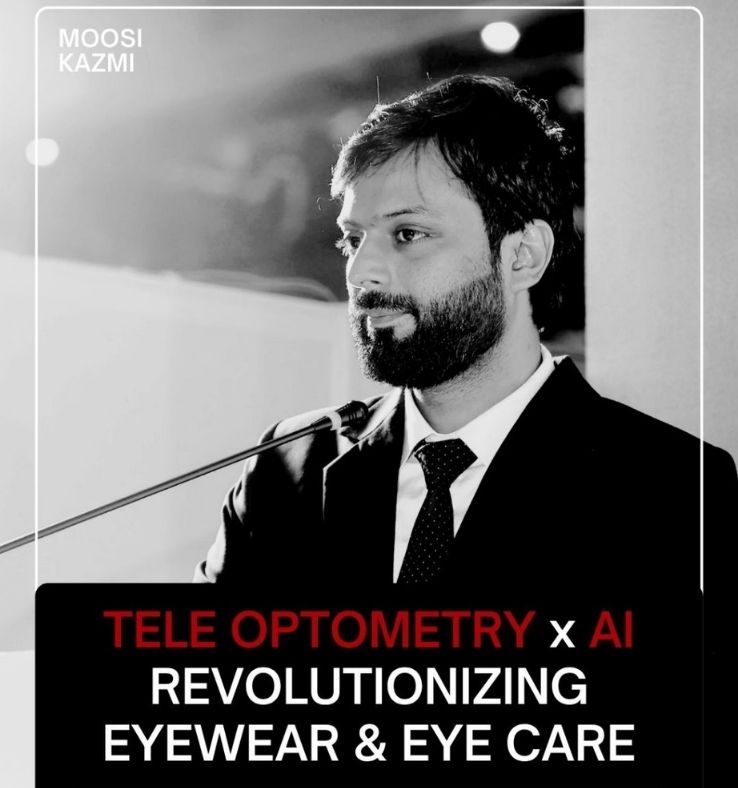New Emerging Roles In Eye-Care

Though COVID-19 was the most difficult time around the world, when we look at the bright side of the pandemic, it was the opportunity to explore the potential of using technology in different industries. We are aware how many aspects of our daily lives were functional due to technology. Every industry adopted creative ways for using technology.
This adoption of technology led to a huge wave of disruption specifically in healthcare.
Telehealth or remote care which was only known to help who did not have access to services now became the new normal. Artificial Intelligence, Augmented reality and Virtual reality which was thought to be relevant only in gaming and other industries now became an integral part of healthcare services. This disruption forced the entire healthcare industry to rethink the way healthcare was delivered to patients.
Eye care industry was no different. Many solutions were developed to help increase eye care access, minimize the cost and improve patient experience. Though things are now going back to normal, use of technology is only going to grow in the future. Many of you might fear and think technology will take away our jobs, but that is not true. There are several advantages of adding technology into our practice. It is interesting to understand how we can use technology to help us create more roles and opportunities.
2023-07-11T12_16_39.jpg) |
Increase flexibility: Using technologies like telehealth or remote care now allows eye care professionals to see the patients anytime from anywhere. If the eye care professional is a new parent or someone who is ready to retire, they can still provide services from home. This also helps to fill the gaps of limited skilled professionals and add additional sources of revenue at their own terms.
Practice beyond walls: Though remote care is not suitable for all, many patients might be a great fit. Several screening activities are known to offer early diagnosis for diabetic retinopathy, glaucoma, progressive myopia, etc. which can help with better prognosis and treatment plans. One can now open several remote care clinics to expand their scope of practice. They are no longer restricted to four walls. More screening = early diagnosis = better prognosis.
Digitalization : We are all aware how data is one of the most valuable resources. Lots of data gets collected but only a handful of it is used as a resource. Studies have shown efficient use of data can provide helpful insights to improve treatment plans and overall business. Digitizing patient charts is the first step towards adopting technology. Adding basic services in a digital format will help the practitioner make well informed decisions for both their business and patient care.
Adopting advanced technology like AI/AR/VR: Artificial Intelligence, Augmented reality and Virtual reality are no longer concepts from the future. We are seeing these technologies used in several formats to improve diagnosis, treatments and patient experience. Every patient or customer would like to have the best and technologically advanced experience. These technologies are known to positively impact the return on investment.
_(15).jpg) |
Increased scope and job opportunities: We need eye care professionals to not only use these technologies but to also build it and be an active leader in changing the digital landscape of the eye care industry. As an eye care professional, we have the domain knowledge and expertise needed to build the best services that can offer best solutions without compromising the standard of care. Roles like “Chief Optometric officer”, “Entrepreneur”, Binocular vision specialist”, etc should be mandatory when building new technologies.
Other newer technologies like blockchain, metaverse, NFTs are also emerging in the healthcare / eyecare industry. We need to start adopting and leading this change. Technology is here to stay and it is important for us to keep evolving if we want to stay relevant as industry leaders. Let's use technology to help us grow and provide patient care.


.jpg)
.jpg)
.jpg)
.jpg)


1.jpg)



.jpg)
.jpg)



_(Instagram_Post).jpg)
.jpg)
_(1080_x_1080_px).jpg)


with_UP_Cabinet_Minister_Sh_Nand_Gopal_Gupta_at_OpticsFair_demonstrating_Refraction.jpg)
with_UP_Cabinet_Minister_Sh_Nand_Gopal_Gupta_at_OpticsFair_demonstrating_Refraction_(1).jpg)

.jpg)








.jpg)



.png)




